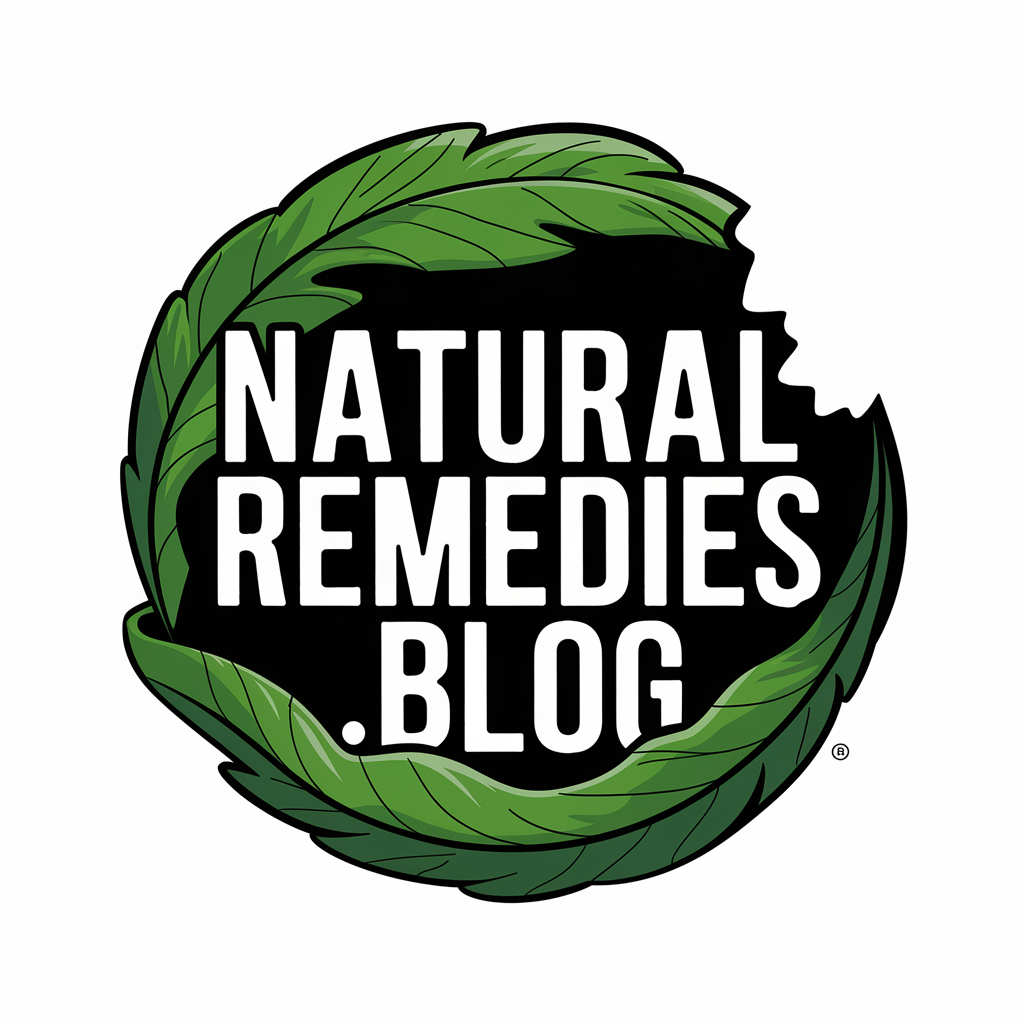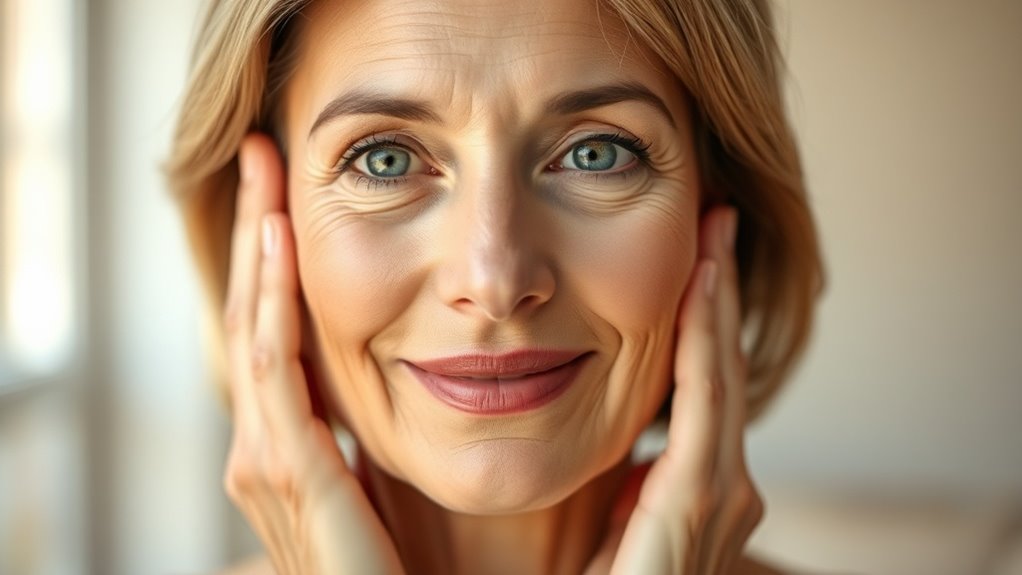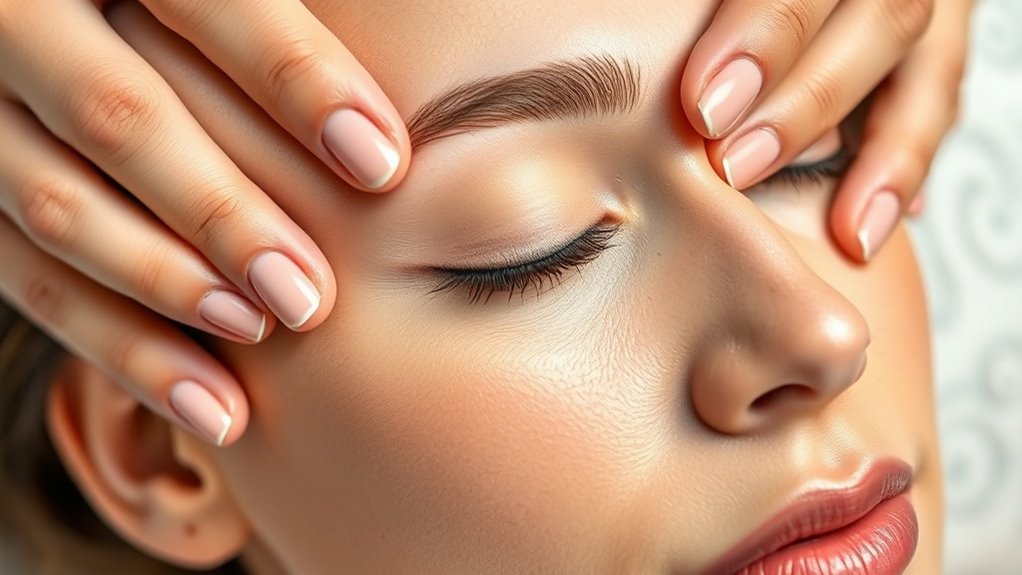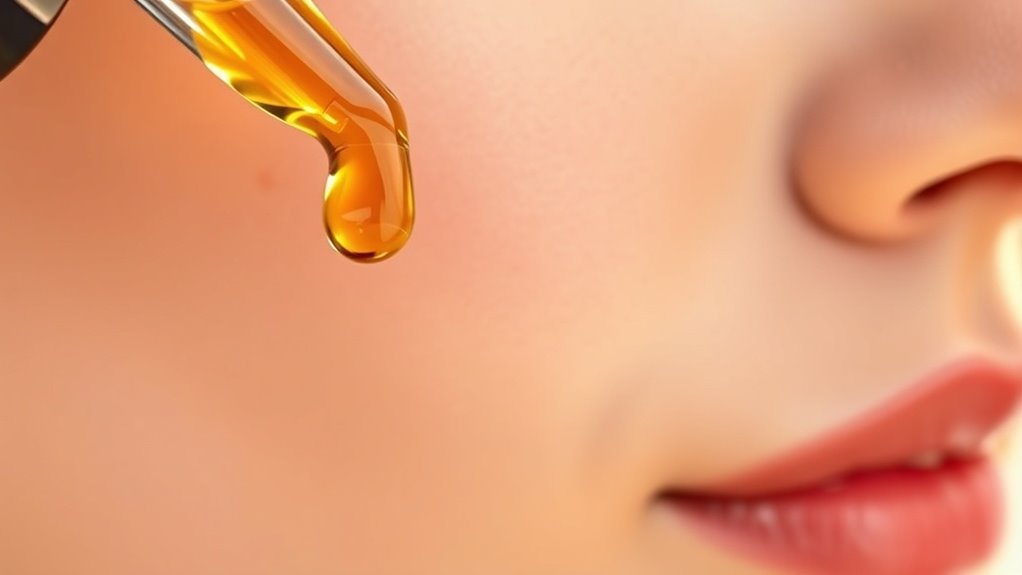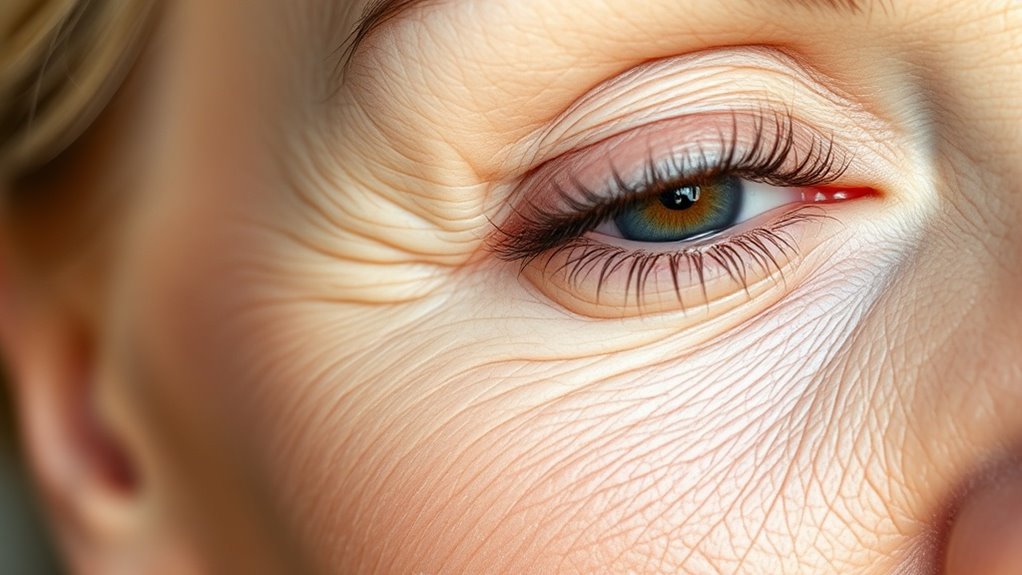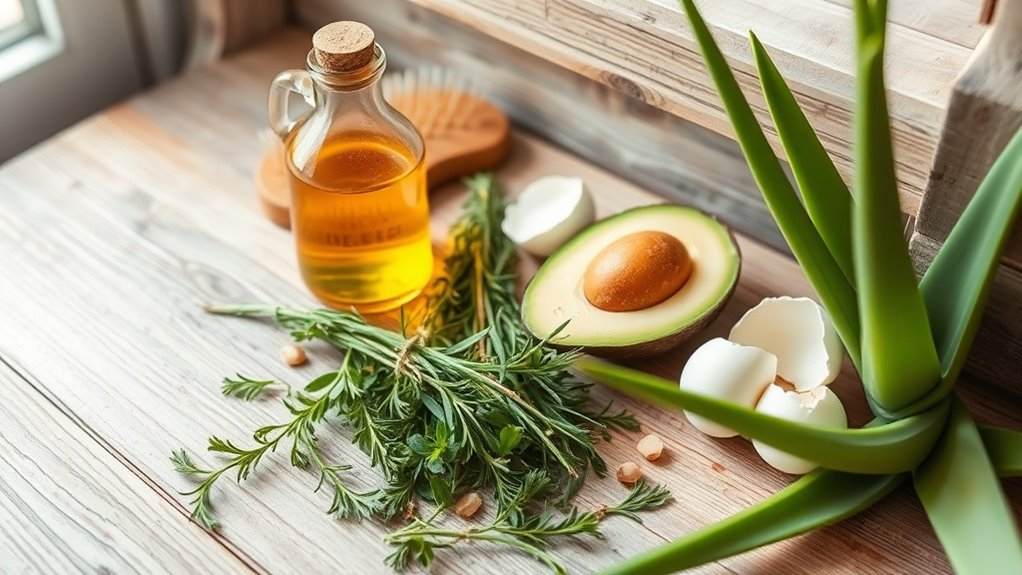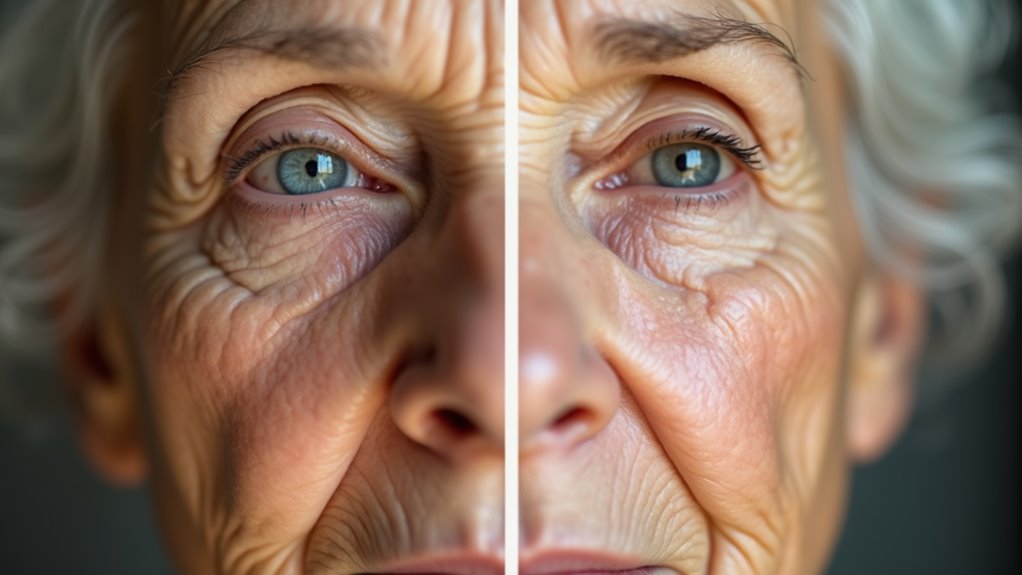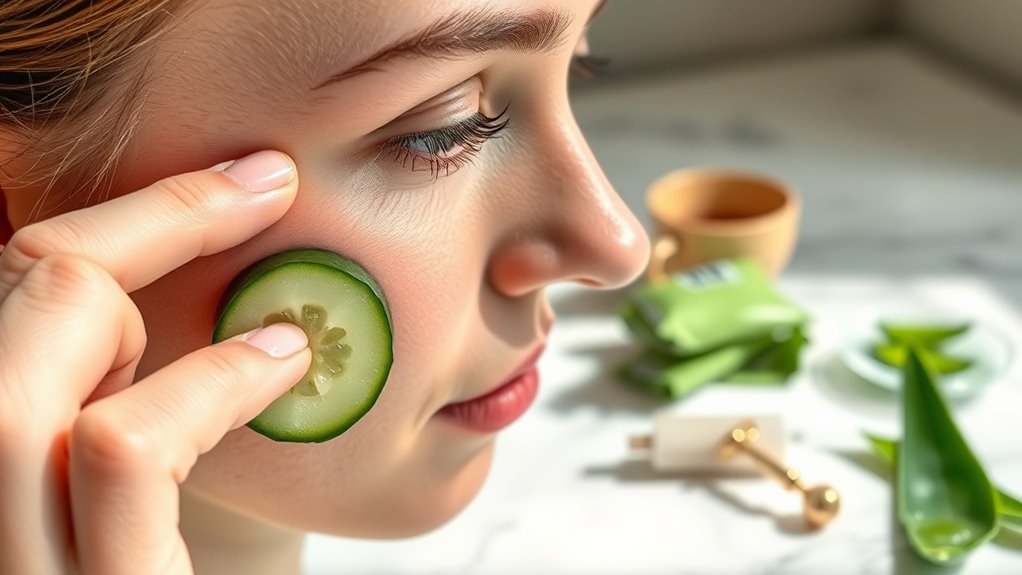How to Reduce Wrinkles Naturally With 8 Face-Saving Tips.
Wondering if you can actually reduce wrinkles without needles or expensive procedures? Yes—certain topical ingredients and lifestyle changes can genuinely minimize fine lines by stimulating collagen production and protecting your skin from further damage. Wrinkles form when your skin loses elasticity and moisture over time, accelerated by sun exposure, repeated facial movements, and declining collagen levels as you age. The good news is that research-backed approaches can target these underlying causes, not just temporarily plump the surface. You’ll discover which ingredients actually penetrate deep enough to work, plus daily habits that prevent new wrinkles from forming. Let’s break down what’s really happening beneath your skin and the eight natural strategies proven to make a visible difference.
Facial Massage Techniques to Boost Circulation and Tone
Facial massage stimulates dermal blood flow, enhancing oxygen and nutrient delivery to skin cells while promoting lymphatic drainage that reduces fluid accumulation and puffiness. You’ll achieve optimal results by applying gentle upward strokes along your jawline, cheeks, and forehead using your fingertips or a jade roller. These wrinkles remedies face techniques activate fibroblast cells responsible for collagen synthesis, improving skin elasticity and firmness over time.
Focus on pressure points around your orbital bone, temples, and nasolabial folds where fine lines typically form. You should perform these movements for five to ten minutes daily, preferably after cleansing when your skin’s absorption capacity peaks. Incorporate facial oils containing vitamin E or rosehip to reduce friction while delivering antioxidant protection against free radical damage. For comprehensive wrinkle reduction, complement your massage routine with face yoga exercises that strengthen underlying facial muscles and may yield visible results within 8-12 weeks.
Hydrating Honey Masks for Deep Moisture and Repair
Raw honey functions as a humectant, drawing moisture from the environment into your epidermis while creating an occlusive barrier that prevents transepidermal water loss. Its enzymatic production of hydrogen peroxide provides antimicrobial properties while gluconic acid gently exfoliates damaged surface cells.
Apply raw, unfiltered honey to cleansed skin for 15-20 minutes. You’ll maximize penetration by combining it with hyaluronic acid serum beforehand. For enhanced collagen synthesis, mix honey with vitamin C powder or fresh lemon juice, though this increases photosensitivity.
The oligosaccharides in honey stimulate fibroblast activity, accelerating dermal repair. Clinical studies demonstrate improved skin elasticity after four weeks of biweekly applications. You can intensify hydration by adding glycerin or aloe vera gel, which amplifies the moisture-binding capacity without compromising honey’s natural healing compounds. Complement your honey mask routine with rosehip oil’s essential fatty acids to further repair and rejuvenate aging skin cells between treatments.
Vitamin C Serums for Brightening and Collagen Support
Vitamin C serums deliver L-ascorbic acid topically to stimulate fibroblast activity and enhance procollagen synthesis in the dermal matrix.
You’ll achieve optimal results by applying the serum to cleansed skin before moisturizer, as the low pH formulation (2.0-3.5) facilitates transepidermal absorption.
Select serums containing 10-20% L-ascorbic acid with ferulic acid and vitamin E stabilizers, stored in opaque, airtight containers to prevent oxidative degradation.
For maximum effectiveness, apply during your nighttime routine when skin permeability peaks, allowing deeper penetration of active ingredients during the body’s natural repair cycle.
How Vitamin C Works
As one of the most researched topical antioxidants in dermatology, ascorbic acid neutralizes free radicals that degrade collagen fibers and trigger premature skin aging. You’ll benefit from its dual mechanism: it directly scavenges reactive oxygen species while upregulating fibroblast collagen synthesis through hydroxylation pathways.
| Concentration | Mechanism | Clinical Outcome |
|---|---|---|
| 5-10% | Antioxidant protection | Reduced oxidative damage |
| 10-20% | Collagen stimulation | Improved skin firmness |
| 15-20% | Tyrosinase inhibition | Diminished hyperpigmentation |
| 20%+ | Maximum penetration | Enhanced photoprotection |
Your skin’s pH matters—formulations below 3.5 optimize L-ascorbic acid penetration through the stratum corneum. You’ll see photoaging improvements within 12 weeks, though stability remains challenging. Ferulic acid combinations enhance antioxidant efficacy eightfold compared to vitamin C alone.
Best Application Methods
Understanding vitamin C’s mechanisms means little without proper delivery to target tissues. You’ll maximize percutaneous absorption by applying L-ascorbic acid formulations to freshly cleansed skin, allowing 60-90 seconds for optimal pH equilibration before layering additional products. Concentration matters—you’ll need 10-20% L-ascorbic acid for therapeutic efficacy, though sensitive skin may require gradual titration starting at 5%.
Optimal application protocols include:
- Apply to damp skin immediately post-cleansing when stratum corneum hydration enhances penetration
- Use 2-3 drops for facial coverage; excess doesn’t improve bioavailability
- Store in opaque, airtight containers below 20°C to prevent oxidative degradation
- Combine with ferulic acid and vitamin E for synergistic photoprotection and stability enhancement
You’ll observe measurable improvements in dermal collagen density and photoaging markers within 12 weeks of consistent twice-daily application.
Choosing Quality Serums
How do you distinguish efficacious formulations from marketing hype when selecting vitamin C serums? You’ll need to evaluate three critical parameters: the form of ascorbic acid, vehicle pH, and stabilization technology.
L-ascorbic acid remains the gold standard, demonstrating superior photoprotection and collagen synthesis compared to derivative forms like magnesium ascorbyl phosphate. However, it requires formulation at pH 2.0-3.5 for optimal dermal penetration.
You’ll want concentrations between 10-20%, as higher percentages don’t significantly enhance efficacy. Look for airless pump dispensers and opaque packaging, which prevent oxidative degradation. Ferulic acid and vitamin E co-formulations provide synergistic antioxidant protection and extend serum stability.
Avoid products exhibiting brown discoloration, indicating oxidation and compromised therapeutic value.
Bakuchiol: The Gentle Retinol Alternative
Clinical evidence supports bakuchiol’s mechanism:
- Upregulates type I, III, and IV collagen gene expression without triggering retinoic acid receptors
- Provides antioxidant protection through free radical scavenging capabilities
- Reduces hyperpigmentation by inhibiting melanogenesis pathways
- Maintains epidermal barrier integrity during treatment duration
You can apply bakuchiol formulations twice daily, including morning application, as it won’t increase UV sensitivity. Studies demonstrate 0.5% bakuchiol concentration yields optimal results within 12 weeks of consistent use. Like vitamin C serums, bakuchiol neutralizes free radicals while simultaneously supporting collagen synthesis for comprehensive anti-aging benefits.
Green Tea Compresses to Combat Free Radical Damage
Green tea contains high concentrations of polyphenolic compounds, particularly epigallocatechin gallate (EGCG), which neutralize reactive oxygen species that degrade collagen and elastin fibers.
You’ll need to prepare compresses using steeped organic green tea cooled to room temperature, ensuring optimal preservation of these bioactive antioxidants.
Clinical studies demonstrate that topical application for 10-15 minutes twice daily reduces oxidative stress markers and improves dermal matrix integrity.
These plant-derived antioxidants also help protect DNA and maintain telomere length, which are critical factors in preventing premature skin aging.
Why Green Tea Works
The polyphenolic compounds in green tea, particularly epigallocatechin gallate (EGCG), demonstrate potent antioxidant activity that directly neutralizes reactive oxygen species (ROS) responsible for collagen degradation and photoaging. When you apply green tea topically, EGCG penetrates the stratum corneum, inhibiting matrix metalloproteinases (MMPs) that break down dermal collagen. This mechanism preserves your skin’s structural integrity.
Green tea’s anti-aging properties include:
- DNA repair enhancement: EGCG activates cellular repair mechanisms, reducing UV-induced DNA damage
- Anti-inflammatory effects: Polyphenols suppress pro-inflammatory cytokines like IL-6 and TNF-α
- Elastin protection: Catechins prevent elastase activity, maintaining skin elasticity
- Melanogenesis regulation: Compounds inhibit tyrosinase, reducing hyperpigmentation
You’ll achieve optimal results using cooled green tea compresses twice daily, allowing bioactive compounds to combat oxidative stress effectively.
How to Prepare Compresses
Understanding green tea’s protective mechanisms means little without proper application technique. You’ll need two organic green tea bags steeped in 240ml boiling water for three minutes to extract optimal polyphenol concentrations. Remove bags, squeeze excess liquid, and refrigerate until temperature reaches 4-10°C. Cold application constricts blood vessels, reducing inflammation while delivering catechins transdermally.
Place cooled tea bags directly onto periorbital regions and nasolabial folds for fifteen minutes. The epigallocatechin gallate penetrates stratum corneum layers, neutralizing reactive oxygen species that degrade collagen matrices. You can alternatively soak sterile gauze pads in the chilled tea solution for broader facial coverage.
Perform this protocol twice daily, morning and evening, maintaining consistent application schedules. Store unused tea solution refrigerated for maximum 24 hours to preserve antioxidant potency and prevent bacterial contamination.
Application Frequency and Duration
How frequently should you apply green tea compresses to maximize collagen protection without risking skin sensitization? Clinical evidence supports twice-daily applications for optimal antioxidant penetration. Each compress session should last 10-15 minutes, allowing epigallocatechin gallate (EGCG) absorption into the dermal layers.
Optimal Application Protocol:
- Morning application: Apply after cleansing to establish baseline photoprotection against UV-induced free radical formation
- Evening application: Reapply to neutralize accumulated oxidative stress from environmental exposure throughout the day
- Temperature maintenance: Keep compress at 98-102°F to enhance vasodilation and facilitate active compound penetration
- Duration limits: Don’t exceed 15 minutes per session to prevent transepidermal water loss and potential irritation
Monitor your skin’s response during the first week. If you experience erythema or increased sensitivity, reduce frequency to once daily until tolerance develops.
Collagen-Boosting Foods for Skin Elasticity
While topical treatments address wrinkles externally, consuming collagen-boosting foods strengthens your skin’s structural integrity from within. Vitamin C-rich foods like citrus fruits, bell peppers, and broccoli facilitate procollagen synthesis through hydroxylation of proline and lysine residues. You’ll need adequate copper from nuts, seeds, and shellfish to activate lysyl oxidase, an enzyme essential for collagen cross-linking.
Bone broth provides glycine, proline, and hydroxyproline—amino acids that serve as collagen precursors. Omega-3 fatty acids from salmon and mackerel protect existing collagen fibers from matrix metalloproteinase degradation. Sulfur-containing foods like garlic and eggs support disulfide bond formation in collagen molecules.
Antioxidant-rich berries neutralize reactive oxygen species that accelerate collagen breakdown, preserving dermal elasticity and reducing photoaging manifestations. Pairing these dietary strategies with adequate hydration by drinking 8-10 glasses of water daily helps maintain skin barrier function and supports overall collagen synthesis.
Sun Protection Strategies to Prevent Premature Aging
Photoaging accounts for approximately 80% of visible facial aging, making broad-spectrum UV protection your most critical anti-wrinkle intervention. You’ll need SPF 30 minimum with UVA/UVB coverage, applied liberally every two hours during sun exposure. Consider zinc oxide or titanium dioxide formulations—they’re photostable and provide immediate protection upon application.
Essential Sun Protection Protocols:
- Apply 2mg/cm² of sunscreen (approximately one-quarter teaspoon for face) to achieve labeled SPF protection
- Seek shade between 10 AM-4 PM when UV radiation reaches peak intensity
- Wear UPF 50+ rated clothing and wide-brimmed hats for mechanical photoprotection
- Reapply sunscreen after swimming, sweating, or towel contact regardless of water-resistance claims
You’re preventing matrix metalloproteinase activation and oxidative stress that degrades collagen and elastin fibers when you maintain consistent photoprotection.
Proper Hydration Protocols for Plump, Youthful Skin
Your skin’s stratum corneum requires adequate water content—typically 10-20% by weight—to maintain barrier function and visible plumpness that minimizes wrinkle depth. Implement these evidence-based protocols to optimize dermal hydration:
| Hydration Method | Mechanism of Action |
|---|---|
| Water intake (2-3L daily) | Maintains systemic fluid balance and dermal perfusion |
| Hyaluronic acid serums | Binds 1000x its weight in water molecules |
| Ceramide moisturizers | Reinforces lipid barrier to prevent transepidermal water loss |
| Humidifier use (40-60% humidity) | Reduces environmental moisture gradient |
You’ll need consistent application of both internal hydration and topical occlusive agents. Monitor your skin’s response by assessing texture improvements within 2-4 weeks of protocol initiation.
Frequently Asked Questions
How Long Does It Take to See Results From Natural Wrinkle Treatments?
You’ll typically notice initial improvements in fine lines within 4-6 weeks of consistent natural treatment application. However, you’ll need 8-12 weeks for significant collagen remodeling and visible reduction in moderate wrinkles, depending on your skin’s cellular turnover rate.
Can Sleeping Position Affect Wrinkle Formation on My Face?
Yes, your sleeping position directly affects wrinkle formation. Side and stomach sleeping create compression forces and shear stress on facial tissue, causing sleep lines that become permanent wrinkles over time. Back sleeping minimizes this mechanical facial distortion.
What Age Should I Start Using Anti-Wrinkle Treatments Preventatively?
You should start preventative anti-wrinkle treatments in your mid-to-late twenties when collagen production begins declining. Dermatologists recommend incorporating retinoids, broad-spectrum sunscreen (SPF 30+), and antioxidants like vitamin C to maintain skin integrity and delay photoaging signs effectively.
Do Facial Exercises Really Work or Can They Cause More Wrinkles?
Evidence remains limited and contradictory. While some studies suggest facial exercises may improve muscle tone, repetitive movements can actually deepen expression lines. You’ll need consistent practice for months to see potential benefits, but results aren’t guaranteed.
Are Expensive Skincare Products More Effective Than Affordable Natural Alternatives?
Research shows price doesn’t guarantee efficacy. You’ll find retinoids, niacinamide, and vitamin C effective at various price points. What matters is active ingredient concentration, formulation stability, and your skin’s tolerance—not the product’s cost.
